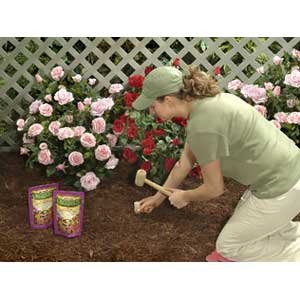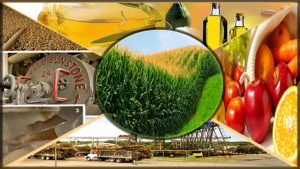 Proper fertilization will help you roses produce more and larger blooms and will shorten the rest periods between flurries of bloom. A complete fertilizer relatively high in phosphate but not too high in nitrogen makes a good rose food. Well-rotted manure also is a good fertilizer. Because this material decompose slowly, you should supplement them with an all purpose fertilizer or with one of the many available rose foods. A fertilizer with a chemical analysis such as 5-10-5, 4-8-4, or 4-8-6 is desirable.
Proper fertilization will help you roses produce more and larger blooms and will shorten the rest periods between flurries of bloom. A complete fertilizer relatively high in phosphate but not too high in nitrogen makes a good rose food. Well-rotted manure also is a good fertilizer. Because this material decompose slowly, you should supplement them with an all purpose fertilizer or with one of the many available rose foods. A fertilizer with a chemical analysis such as 5-10-5, 4-8-4, or 4-8-6 is desirable.
Apply these complete fertilizers to rose beds according to label directions or at the rate of three pounds per 100 square feet, or apply one heaping teaspoon to each plant. Spread the fertilizer evenly around the plants, scratch it into the soil surface and water.
Apply the fertilizer in spring when new growth is apparent and all danger of severe freezing is past. A second application can be made later in the season if the plants show evidence of mineral deficiencies: yellowing of the leaves is due to the lack of nitrogen, leaves turn grayish green from lack of phosphorous, and browning of leaf margins is caused from lack of potassium. Chlorosis (an unnatural early or mid-season yellowing of the foliage with the veins usually staying darker green) is most often due to an iron shortage caused by poor drainage or excess lime in the soil.
Don’t fertilize your roses after July 15. When applied late in the season, fertilizer may stimulate new growth and delay hardening of the wood before winter.







